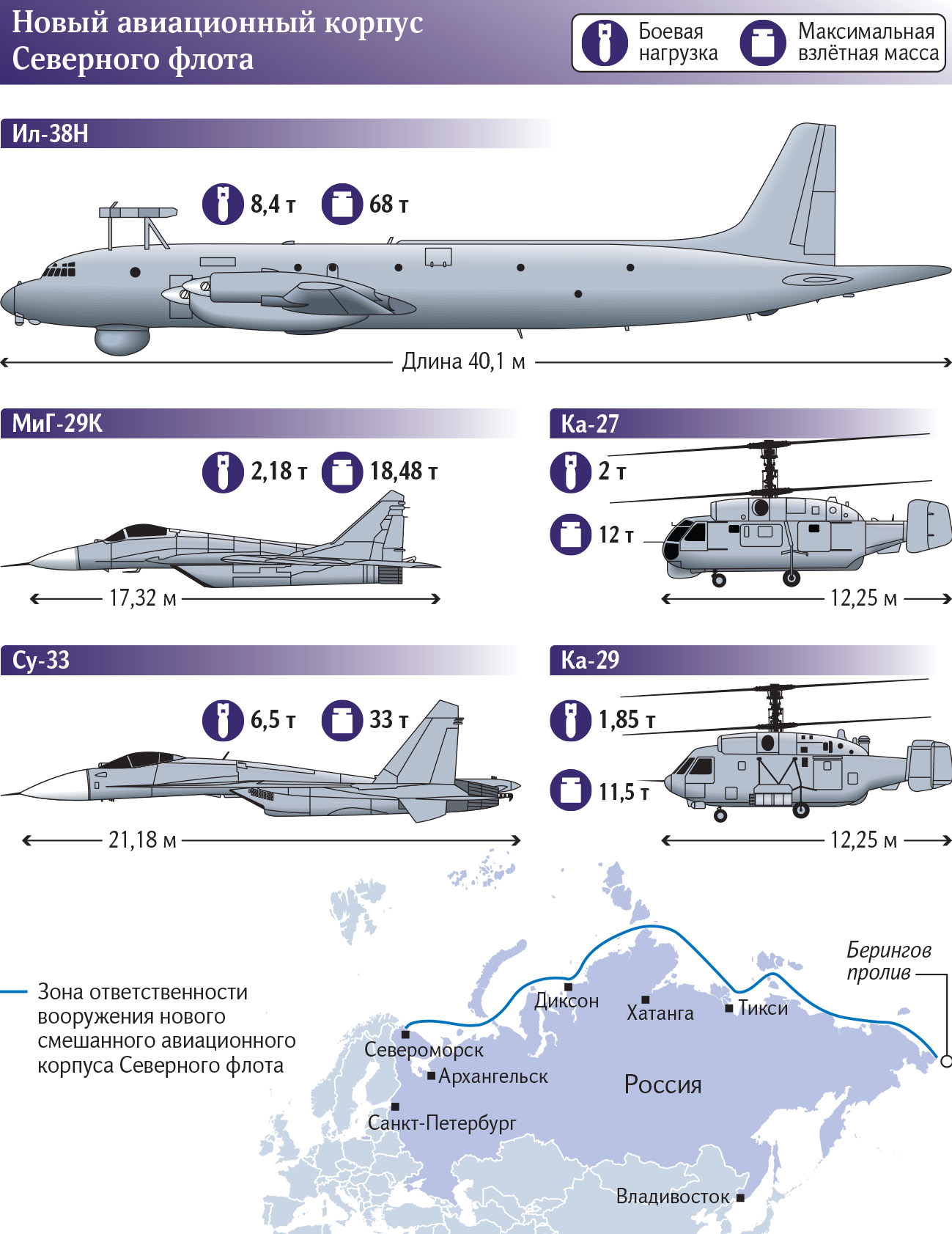A fleet of Russian helicopters and fighter jets, including Su-33 and MiG-29, has commenced patrols along the vital Northern Sea Route. The mission is conducted by the newly established Mixed Arctic Air Corps, operating under the jurisdiction of the Northern Fleet of the Russian Navy.
Russia ‘Sabotages’ Ukraine’s Aircraft Deal With An Ally Using Its Diplomatic & Commercial Clout – Top Official
This new combat formation is designed to protect the critical Arctic transport route and the northern islands from threats posed by enemy air, land, surface, and submarine forces, sources in the defense department told Izvestia.
The report said that a new Mixed Aviation Corps (SAC) has been established within the Northern Fleet, evolving from the 45th Army of the Air Force and Air Defense. The corps comprises two fighter regiments, mixed aviation and helicopter regiments.
The composition of the Northern Fleet’s Mixed Aviation Corps includes two fighter aviation regiments, namely the 279th and the 100th, along with a mixed aviation regiment equipped with An-12 and An-26 transport aircraft and Il-38N anti-submarine aircraft.
Additionally, the SAC features a helicopter regiment equipped with Ka-27 search and rescue and anti-submarine helicopters, as well as transport and attack Ka-29 and Mi-8AMTSh/MTV-5 helicopters.
Beyond aviation assets, the corps commands anti-aircraft missile and radio engineering regiments, enhancing its overall defensive capabilities. The aviation equipment of the Mixed Aviation Corps has already been deployed to Russian Arctic military bases.
Notably, Su-33 and MiG-29KR fighters from naval aviation regiments are already actively engaged in securing the Northern Sea Route and other Arctic regions, stationed at the Rogachevo airfield on Novaya Zemlya, the report added.

Meanwhile, the pilots of the Northern Fleet’s Mixed Air Corps have already started training exercises. Notably, on December 21, Il-38 aircraft engaged in training flights over the Barents Sea, focusing on group search and tracking of simulated enemy submarines.
These exercises incorporated the integrated use of radar and hydroacoustic equipment and took place during the challenging conditions of the polar night.
The primary objective of these flights was to enhance the coordination of pilots operating in groups, ensuring seamless execution of designated tasks, as reported by the press service of the Northern Fleet.
Subsequently, on December 24, the Northern Fleet conducted exercises to organize the protection and defense of the airfield belonging to the mixed aviation corps.
During these exercises, military personnel were briefed on using quadcopter-type unmanned aerial vehicles and tactics for countering them.
Importance Of Northern Sea Trade Route
The significance of the establishment and activities of the Northern Fleet’s Mixed Air Corps becomes apparent when considering that the Northern Sea Route traverses some of Russia’s most strategically vital areas.
The Arctic region, through which this route passes, serves as a critical arena for various Russian military operations. It is home to the highest concentration of Russian ballistic missile submarines and is a crucial deployment area for these potent naval assets.
The Arctic region also functions as a testing ground for new weapons and technologies and allows Russia to evaluate and advance its military capabilities in extreme conditions.
The presence of essential air bases for strategic bombers further underscores the region’s importance, which enables the rapid deployment and support of aerial assets.
Additionally, the Arctic houses other critical military and intelligence infrastructure integral to Russia’s national security. As such, the activities of the Northern Fleet’s Mixed Air Corps play a crucial role in safeguarding these strategic assets and ensuring the overall defense and security of Russia’s interests in the Arctic region.
Moreover, Russia categorizes the Northern Sea Route as a domestically unified transport route extending from the Kara Gates in the western Arctic to Deznev Cape in the east.

This route comprises several lanes, with the predominant one traversing four straits: the Vilkitskii, Shokalskii, Dmitri Laptev, and Sannikov Straits.
According to Russian law, these straits are considered internal waters. However, differing viewpoints exist, as the United States and its allied countries contend that these straits should be recognized as international, thereby falling under the right of transit passage.
Speaking to Izvestia, Russian military expert Dmitry Boltenkov provides insight into the strategic significance of the Northern Fleet’s Mixed Air Corps, emphasizing its defensive role in protecting crucial naval bases, islands, and the Northern Sea Route.
Boltenkov asserts that the tasks assigned to the new air corps are defensive in nature, given the heightened activity of ships and spy planes near Russia’s northern borders in recent years.
He underscores the absence of a downward trend in this activity and predicts its continued growth. Boltenkov characterizes the actions of NATO countries and others as an undeclared war against Russia.
Boltenkov further notes that the Northern Fleet, through the capabilities of the Mixed Air Corps, may need to obstruct the access of unfriendly fleets to the waters of the Northern Sea Route in the event of heightened tensions.
Therefore, the deployment of aviation assets is essential for effectively addressing and mitigating potential threats in the Arctic region, aligning with a posture to safeguard Russia’s interests in the North.
- Contact the author at ashishmichel@gmail.com
- Follow EurAsian Times on Google News




